-
What interest ?
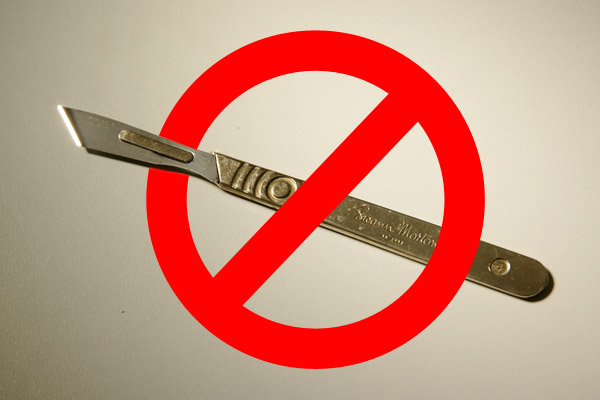 Mobilizing tissues up, so lifting them, but without practicing cut skin to shorten it or deep detachment to mobilize it better, in order to preserve the blood supply that is essential to its quality.
Mobilizing tissues up, so lifting them, but without practicing cut skin to shorten it or deep detachment to mobilize it better, in order to preserve the blood supply that is essential to its quality.
The interest is clearly to preservation and it allows to leave the surgical field.
Techniques which do not require to open the skin to implant suture are called "percutaneous".
- Indeed, if those surgical section and dissection acts have an interest to shorten and strengthen lifted tissues, the definitive vascular damages they inflict on the skin seem to be out of proportion price compared to their result
The visible scars are also a major problem in surgery, in the opinion of plastic surgeons, who have always tried to minimize the scarring ransom related to their lift.
Definitive vascular damages, which have always been denounced by dermatologists, are incentives to give up a surgical action. It is also necessary to provide medical alternatives so that results can at least approach results of conventional surgical facelifts.
While endeavouring to obtain reasonably lasting results, we must therefore seek to promote in the future the least aggressive and most conservative tissue therapeutic action, thus allowing a better cutaneous control in time. The suturing results from that idea.
This preference of the public- and practitioner - for less invasive solutions to be found in all specialties, and logically, cosmetic surgery should not be spared. In recent years, growing number of plastic practitioners have been discovering the virtues of filling injections. -
For what locations?
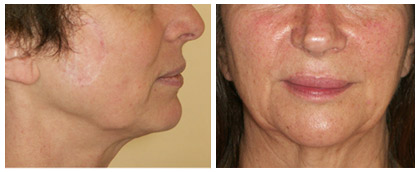 The face is the most affected area by this medical lifting technique. This facelift surgery has been practiced for over a century. Other areas (breasts, belly, inner thighs) are the subject of feasibility studies.
The face is the most affected area by this medical lifting technique. This facelift surgery has been practiced for over a century. Other areas (breasts, belly, inner thighs) are the subject of feasibility studies.
- Parts of the body that sag with age are not lacking, but we don’t know yet how to treat each part with equal success. Therefore we must specify those whose fall is the most prejudicial to an acceptable body image, and those that respond best to treatment.
The face is the most required one, followed closely by the breasts and buttocks. Then comes the lower area of the arms, inner thighs, stomach and some rarer areas. Apart from the buttocks, all these areas can be surgically lifted with a wide variety of techniques with highly variable results.
The face is the most requested area because of its high visibility, protocols for suture installation are the most numerous and the results are already satisfactory.
For several years, circling loops made of a smooth slowly resorbing thread, have been used for buttocks installation of permanent barbed sutures with a larger diameter are in process with different protocols. The considerable weight of tissue masses to mobilize combined with mobility of the underbody muscle masses, represents a quite different situation from the face one and makes the stable lifting of this area a difficult target.
The breasts, in high demand, are also the subject of attention and some preliminary studies with adapted suture in various and more complex locations.
The example of the face, much more advanced and informative, will be used during this information intended to explain the mechanisms of the sutures and the great principles of installation. -
For which patients ?
 This soft alternative to surgical facelift is meant for anyone suffering from a sagging face, as early as in one’s forties, which gives his face a constantly tired, sad or even sullen aspect, unrelated to his real feeling.
This soft alternative to surgical facelift is meant for anyone suffering from a sagging face, as early as in one’s forties, which gives his face a constantly tired, sad or even sullen aspect, unrelated to his real feeling.
The refusal of surgery or heavy anaesthesia may also guide to this therapeutic choice, even if it is very different from the surgical approach.
- The ideal patient is someone, man or woman, whose sagging tissue disturbs the face, giving him a sad or tired look when the face stops moving, leaving him painfully split between his external appearance and his interior feeling. Loss of confidence generated by that image degradation can be considerable.
Sagging tissue begins at the temple, strongly worsens on cheekbone giving that sad (look), and then ends with jowls and neck. It is therefore evident, even before forty, an age at which surgical mini facelift solution is not viewed with enthusiasm, nor, besides, topical.
Anyone with a sagging face is likely to benefit from support suture and the fact that he refused a surgical procedure now leaves him the possibility of an alternative.
The mere existence of this category of patients that can’t be neglected is enough to encourage research in this type of technique.
To that, you may add poorly healing smokers for whom surgery is not recommended, patients wishing not to repeat the experience of the facelift surgery (20% of installation suture), and others.
The absence of scars so hard to hide especially in men gives an important advantage to this method.
In this technique, as in all other, there are good and bad candidates. A very weak skin will be less favourable than a solid skin to the same degree of subsidence. Heavy tissues will be harder to lift-up durably than lighter tissues.
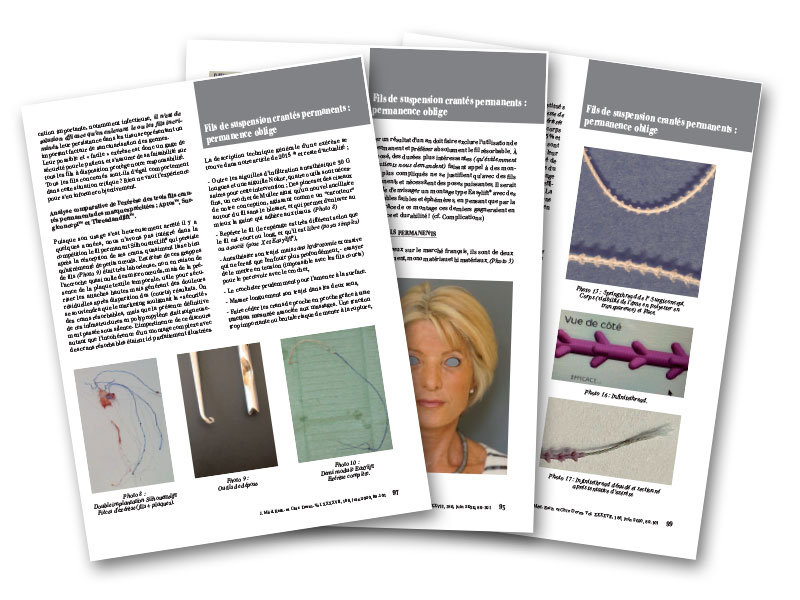 Fils de suspension crantés permanents : permanence oblige (PDF, 2020)
Fils de suspension crantés permanents : permanence oblige (PDF, 2020) 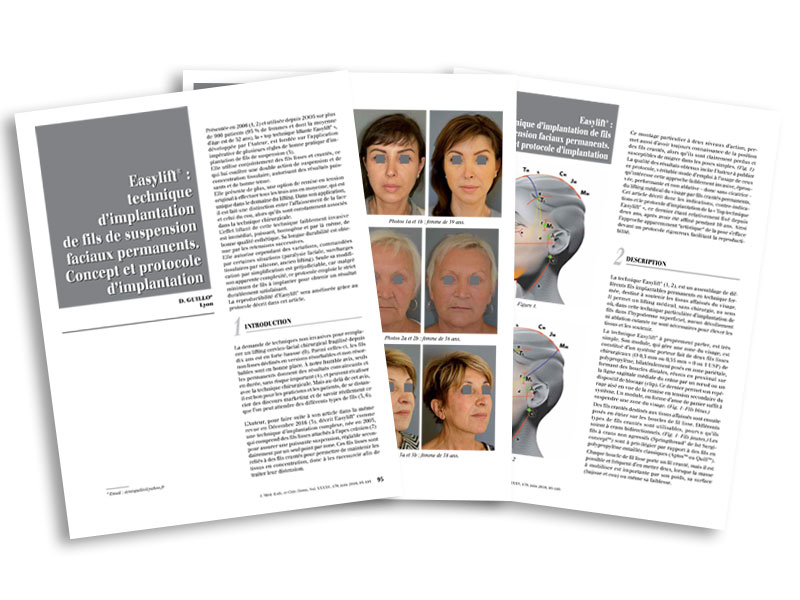 Easylift® : technique d’implantation de fils de suspension faciaux permanents.
Easylift® : technique d’implantation de fils de suspension faciaux permanents. 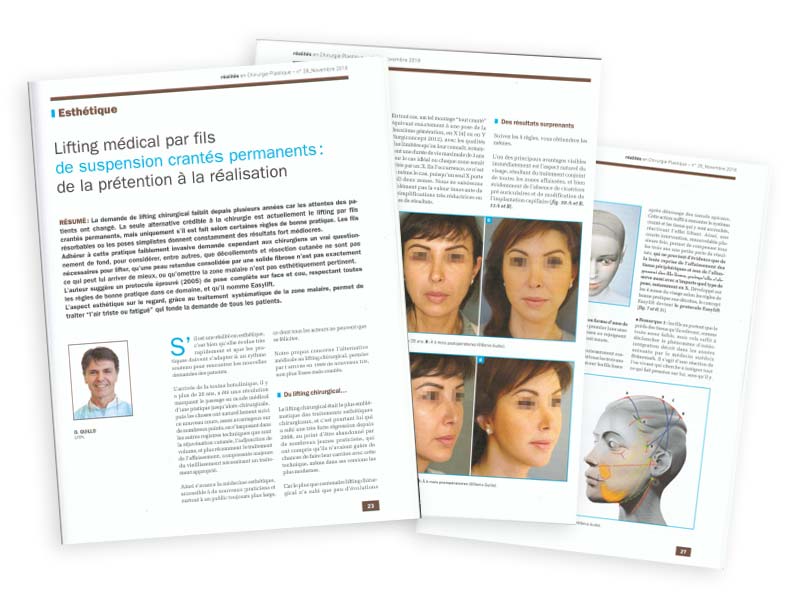 Lifting médical par fils de suspension crantés permanents
Lifting médical par fils de suspension crantés permanents 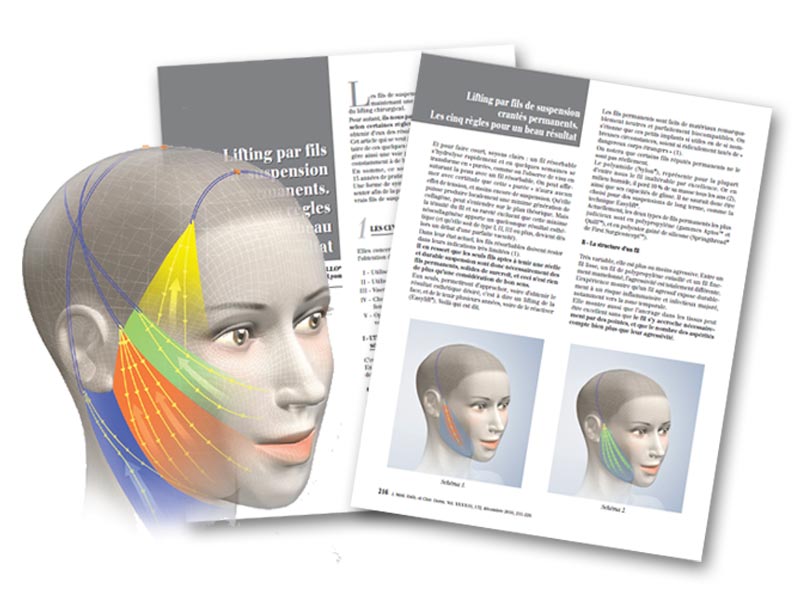 Lifting par fils de suspension crantés permanents
Lifting par fils de suspension crantés permanents 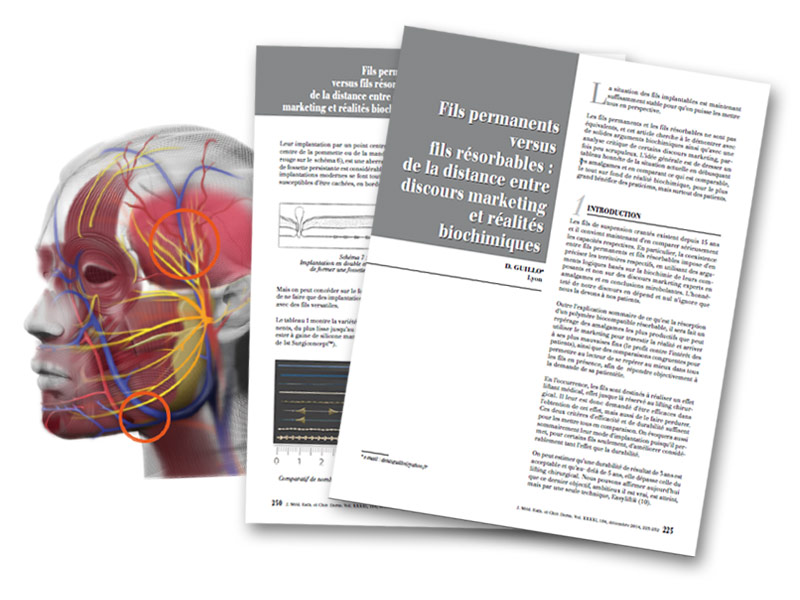 Fils permanents vs fils résorblables : de la distance entre discours marketing et réalités biochimiques
Fils permanents vs fils résorblables : de la distance entre discours marketing et réalités biochimiques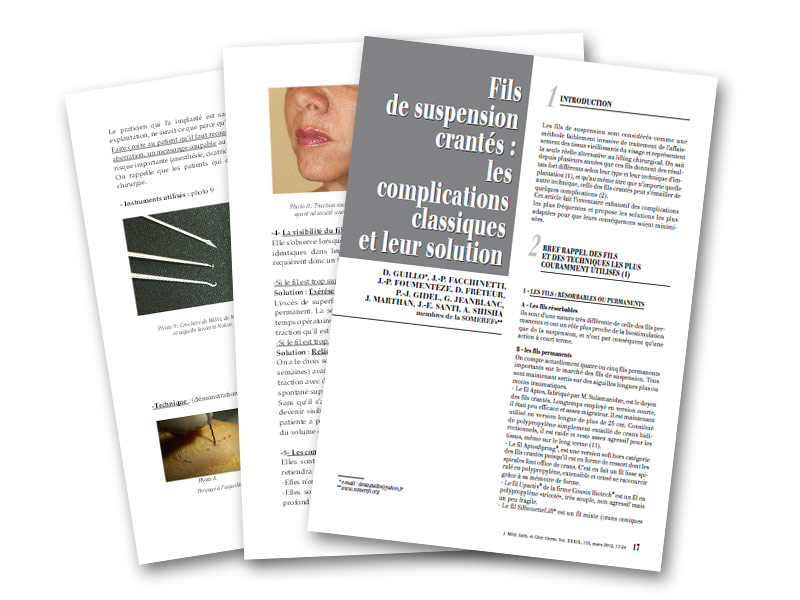 Fils de suspension crantés : Les complications classiques et leur solution.
Fils de suspension crantés : Les complications classiques et leur solution.